The Olympus E-P2, A Personal Review
 |
| Sigma 30mm via MMF-1 on Olympus E-P2 |
This is an “experiential” review. It’s based on my highly subjective experiences with the camera, not on any objective technical analysis such as lens sharpness or sensor resolution tests. While the E-P2 is capable of both still and video, I've concentrated just on the E-P2’s still capabilities.
My Background, or Why Did You Buy This?
I'm a long time Olympus user, going back to the OM-4 I purchased in 1984 while on a trip to San Francisco. The OM-4 instilled an appreciation for Olympus' optical and general build quality. That heritage has carried through into Olympus' digital cameras, up to and including the E-P2.
The E-P2 is the third Olympus digital camera I’ve purchased in the last four years. My first was an E-300 kit in March 2006. My second was an E-3 kit in December 2008. My third, the E-P2, arrived in December 2009 from B&H Photography as another kit that included body, electronic viewfinder VF-2, and the M.Zuiko 14-42mm f/3.5-5.6 zoom lens.
The E-300 was my first tentative step into Olympus-style digital photography. When I discovered how enjoyable the E-300 was, I jumped into owning Olympus gear with both feet and purchased the E-3 along with several HG lenses. The E-3 is a superb DSLR, especially out in the field here in Florida. It has repeatedly proven to be rugged, reliable and consistent in operation and output. The only “problem” I have with the E-3 is that at certain times, especially with a compliment of Zuiko Digital lenses, the kit can get just a tad too heavy to haul around.
I was therefore very receptive to the concept and implementation of the E-P2. I was in the market for a small unobtrusive camera that would give me the image quality and some key features of the E-3; overall the E-P2 has delivered.
So What Is the E-P2, Exactly?
It’s a very compact, mirrorless, interchangeable lens camera, designed and built around the 4/3rds sensor. Being mirrorless and subsequently without pentaprism and optical viewfinder, Olympus and its 4/3rds partner Panasonic were able to shrink the size (most significantly the depth from lens mount to sensor) of the camera body, producing a new compact camera they call Micro 4/3rds. Because micro 4/3rds cameras are mirrorless they use live view from the sensor to the build-in LCD, and at times an attachable electronic viewfinder, for through-the-lens focusing. Live view is not always necessary; Olympus sells a pancake lense that will work with a simple non-electronic optical viewfinder (the VF-1) that you slide into the hotshoe. But for just about any other lens you can mount live view is a must.
Nearly every other reviewer has described the E-P2 as the ‘digital Pen’. Even Olympus’ own marketing group refers to it this way. I believe the real descendant to the Pen was the E-300 (and E-330). The key feature the E-300 shared with the Pen was the Porro prism system for focusing through the lens. If you check older Olympus documentation circa 2005, you’ll find where Olympus said essentially the same thing. To me the E-P2 is the follow-on to the E-300, as much as it is the old Pen in digital form. I just wish they’d carried the E-300’s Porro finder into the E-Px series, or else mounted the EVF on the body. But I can see why they didn’t do either.
Physical
The E-P2 is a gorgeous, well-built little camera. The polished black metal around the body, the precise fit between all body components, and the heft in the hand for its small size exude a feeling of high quality. To my eye and hand the fit and finish of the E-P2 rivals that of the E-3. It’s an irrational statement to make, but the E-P2 invites (almost begs) me to pick it up and use it, far more than just about any other camera I’ve ever come across.
I purchased the E-P2 instead of the nearly-identical E-P1 because of the VF-2 electronic view finder that is available only with the E-P2. As with the E-3, a superb viewfinder played a key role in my final purchase decision of the E-P2. Big and bright, the VF-2 has 1.4MP of resolution, shows 100% of any attached lens’ view, and has a 1.15x magnification for easier viewing. The VF-2’s view and magnification match the E-3’s, and for the most part matches the clarity of the E-3’s optical viewfinder. While most photography with the E-P2 can be conducted with the rear LCD, there's one situation where a viewfinder is needed, and that's outside in the bright Florida sun. In direct sunlight the back LCD can be washed out; that's when the VF-2 can step in an provide clear unobstructed focusing. The VF-2’s only flaw (and just like live view in general) is its electronic nature; it will suffer from vertical noise streaking in low light situations. And the dimmer the shooting situation, the noisier it gets, leading to difficulty in focusing, especially if focus assist is enabled.
While the body gets high marks for build quality, the 14-42mm kit lens doesn’t quite so much. The lens certainly isn’t junk, but physically it’s not in the same league as the body. With a maximum aperture of only f/4 at 14mm, its best use is in reasonably bright light (outdoors in sun and shade, or indoors with plenty of light).
The 14-42 lens is made almost entirely from plastic, with the exception of the optics and the metal lens bayonet. The 14-42 was designed to ‘fold’ or collapse into itself when traveling. It takes a 15-20 degree twist of the zoom ring to extend the lens. Fully extended, it’s more than twice as long as it is collapsed.
It’s in the extended position where the lens’ physical quality feels the least acceptable. It feels unduly hollow and flexible, almost too fragile for heavy duty use. When I think of solid work-a-day lenses I think of my original kit lenses on the E-300 or the HG 12-60mm, 50-200mm, and 50mm macro. The M.Zuiko 14-42mm is not in their league.
Once extended, the lens stays locked in this position until you open the lock on the zoom ring and twist the zoom ring in the opposite direction to collapse it. With the 14-42mm lens attached to the E-P2 and collapsed into its traveling position, the E-P2 will easily fit into a coat pocket. And with the long cold spell we’ve had here in Central Florida recently, I’ve had plenty of experience putting it in my coat pocket.
In spite of my concerns about the M.Zuiko's physical build, optically speaking it will consistently produce pleasing results. As usual, Olympus has produced a lens that is sharp wide open; it has to be, as the fastest maximum aperture is f/4 at its widest focal length.
The VF-2 is primarily plastic with a matt black finish that appears almost impervious to scuffs and fingerprints. It seems rugged enough for its diminutive size, but never-the-less I handle it rather gingerly, due to the fact that it’s a small, easily misplaced $300 precision optical device. I obsess enough over losing $7 E-3 eye cups. The idea of losing the VF-2 is almost heart-stopping. But that’s my personal obsession.
Operational
Operationally there is a considerable difference between the E-3 and the E-P2. While they share the same sensor size and the E-P2 can mount the E-3’s lenses with the MMF-1 adapter, the E-P2 is not a replacement for the E-3. Instead the E-P2 makes an excellent alternative to the E-3 where the situation doesn’t call for the E-3’s heavy firepower.
When I wrote about the handling of the E-3, I wrote that it fit my hand like a glove, that it seemed an extension of my arm. The E-P2 does not exactly share this feeling. This is not a bad thing, but it can be disconcerting when first held. The E-P2 is nearly weightless compared to the E-3, even with its 14-42mm kit lens attached. As I said before it can be easily tucked into a large coat pocket or dropped into my computer bag, something the E-3 most definitely can’t do. Most significantly, I’ve noticed that the E-P2 is far less intimidating than the E-3 when used around people. More than once I’ve walked into situations with the E-P2 where I was able to take all the photos I cared to take and no one knew nor cared. The E-P2 looks, at a distance, like a point and shoot. Thus camouflaged I am quickly dismissed and become just another anonymous tourist. But let me pull out my E-3 with the 12-60mm, or heaven forbid, the 50-200mm, and I’m quickly vectored in by Important People who are asking Pointed Questions, such as why I’m taking photographs, and would I please leave?
Ergonomic
To repeat the obvious, the E-P2 is much smaller than the E-3. With my big ham hands the E-P2 demands a different way of handling. The controls on the back of the body are smaller than on the back of the E-3, perhaps a bit too small for my liking. And perhaps a bit too cramped. In addition to the too-small too-close buttons, the designers of the E-P2 decided to put a sub dial on the right back ridge over which the thumb normally rests. I find it too easy to rub the sub dial in either direction, which, depending on the mode, can inadvertently change shutter speed, aperture, or program bias. To compensate for this I automatically look at the back of the camera; if the super menu is up (I normally keep it down) because I’ve inadvertently touched the wheel or another control, I can clear it by tapping the shutter. If I’ve shifted the program bias, shutter speed, or aperture, I quickly roll the wheel back to what I had it originally set to. An alternative is to just turn the camera off. The on/off button is on the top deck next to the shutter release, and the E-P2 powers up fast enough that just keeping it off between series shooting is not an issue.
The main dial around the OK button also has problems. It’s too small, demanding a rather petite touch to use the circular travel. It’s too easy to hit ISO and White Balance and inadvertently change them; as I said before I’ve learned to automatically check the back of the camera when lifting it up use.
In spite of these nits, I’ve learned to compensate for them such that they no longer trouble me.
Flash
Many have complained of the lack of built-in flash. I personally don’t care. When I have a need for flash I reach for the E-3/FL50-R combination. The E-P2 is strictly used for available light shooting.
Many more complain of the single-function plugins that slide into the hotshoe and force you to use it just for flash, or the EVF, or the external microphone adapter. Once again, it’s a matter of personal use and taste. Since I don’t use the video portion (not yet anyway), I’m not (yet) bothered with the issue of losing the external microphone connection to use the VF-2 (and vice versa). And while I’m certainly no video expert, I have seen other video experts use the LCD screens of other DSLR cameras when using those DSLRs for video (such as the Nikon D-90 and Canon 5D MkII). I can't imagine using the VF-2 to shoot video with, but then I'm certainly no videographer.
Autofocus
Here’s where the conversations about the E-P2 get really interesting. Depending on who you read, the autofocus capabilities of the E-P1/2 range from just fine to absolutely terrible. As usual, the truth is far more nuanced.
I’ve been carrying the E-P2 in a Domke F6 Little Bit Smaller bag along with a Digital Zuiko 50mm f/2 macro regular 4/3rds mount lens, a Digital Zuiko 9-18mm f4-5.6 regular 4/3rds mount lens, and a Sigma 30mm f/1.4 regular 4/3rds mount lens. This is in addition to the 14-42mm f/4-5.6 micro 4/3rds mount kit lens. I’ve also experimentally used my Digital Zuiko 12-60mm and my Digital Zuiko 50-200mm lens on the E-P2. All the regular 4/3rd mount lenses were used with the MMF-1 4/3rds adapter. I’ve learned a lot about how autofocusing works on the E-P2 with all these lenses.
Let me make one thing perfectly clear at this point; the E-P series of cameras are not autofocus speed demons. If you need blazing fast autofocus then this isn’t the camera for you. I own the E-3, and with the ZD 12-60mm attached it can focus and lock on a subject so fast it’s nearly instantaneous. But that’s when the E-3 is using it’s TTL focusing system. Put the E-3 in live view and then you’ll discover what painfully slow focusing is all about. The E-3 in live view focusing makes the E-P2 look fast by comparison. The closest you’ll get to good live view focusing in the E series is with the E-30, and that’s with the 14-54mm MkII, and that lens was specifically upgraded to work with CDAF on the E-30. And that’s the only lens in the regular 4/3rds mount to do that. The E-P2 is an artist’s camera, a contemplative photography camera. If you need something to capture the frenetic pace of 21st century living, then the E-P2 is not for you.
The best lens with regards to autofocus performance is the Olympus M 14-42mm kit lens that ships with the E-P2. The lens also best illustrates how autofocus works with the E-P2. In default mode (i.e. using the shutter release to autofocus), when the shutter release is partially depressed the E-P2 focuses the lens out, then focuses the lens back in past the point of sharpest focus, then back out to the correct point of focus. And it does this every time you press the shutter release. This racking of the lens is reasonably fast, but the issue with many people is that the E-P2 does it every single time. There is no concept of a “last good focus point” with the E-P2. If you're dependent upon autofocus you can speed up the overall autofocus process by programing the AEL/AFL (Auto Exposure Lock/Auto Focus Lock) button on the back of the camera to perform autofocus in place of the shutter.
To reprogram the AEL/AFL button, make sure that you’ve already gone into the Setup Menu (the last menu in the top level Menu mode, the entry with the wrench) and turned Menu Display on. This will add a new top-level menu entry right above the Setup Menu. Once enabled, go into the Customization Menu (the menu you just enabled), step down to entry B (Button/Dial) and select it. Now step down to AEL/AFL and select it. You’ll see a submenu with three entries; S-AF (Single Autofocus), C-AF (Continuous Autofocus), and MF (Manual Focus). Select S-AF. In this final menu you will select between four modes numbered 1 to 4. Step to mode 3 and then press the OK button. Exit the menu. From this point forward pressing the AEL/AFL button will trigger autofocus. The shutter button will now only trip the shutter.
Why is this important? If you’re shooting where the subject isn’t rapidly moving toward you or away from you, or if you want to pick a specific point and pre-focus on it and then allow your subject(s) to enter that pre-focus region, then occasional focusing will speed up shooting tremendously. As clumsy as this sounds it’s quite easy to setup and operate.
All the other lenses I tried autofocus no better on the E-P2, and one barely autofocuses at all. My favorite regular 4/3rds lens to use on the E-P2 is the 50mm. It’s a sedate autofocusing lens on the E-3, and I'm happy to report it maintains that reputation on the E-P2. The combination of E-P2 and 50mm can produce stunning results, as good if not better than what you can get on a regular 4/3rds camera, which is why it's worth using. When attached via the MMF-1 the whole combination is easy to handle and well balanced, in spite of the fact it dwarfs the 14-42mm by comparison.
The 50mm benefits from another built-in feature of the E-P2, manual focus assist. You can enable this feature in the Custom Menu under AF/MF, MF Assist. When enabled, touching the focus ring automatically causes the E-P2 to magnify the area being used by the autofocus region. You can then fine-tune your focus, then trip the shutter.
The 9-18mm is a good lens to have in the bag, and seems to autofocus as fast as the kit lens. The E-P2's scale display and the level display on screen help the UWA considerably, especially when shooting architecture.
Of all the regular 4/3rds lenses I tried, the most problematic on the E-P2 is the Sigma 30mm. It’s performance is adequate on the E-3, but it sinks to barely usable on the E-P2. Autofocus performance is very slow, and for reasons which only the Sigma engineers could every figure out, focus assist does not work with this lens. To make focus assist even remotely useful with this lens you need to toggle to the zoom display with the Info button, then press the OK button to manually zoom. Pressing the OK button again returns the LCD back to normal display mode. I carry the 30mm because its a fast f/1.4 speed which is usable wide open. But I’ve half a mind to return it to the E-3 kit bag and replace it with the Panasonic 20mm f/1.7 pancake in micro 4/3rds mount.
One lens that surprisingly falls down in autofocus is the 12-60mm. Its autofocus speed and accuracy on the E-3 does not carry over to the E-P2. While it will zip in and out fast enough in the first two steps of E-P2 autofocus, the step to final focus is a series of tiny stuttering steps, in which I hear individual activations of the focus motor until focus is achieved. Autofocus is not accurate through the 12-60mm’s range. While the 12-60mm is tack dead on at 12mm, it consistently front focuses at 60mm. And so it stays mounted on the E-3 and in the E-3 kit bag.
The 50-200mm is a big lens and needs an E-3 or E-30 body to handle it well. Putting it on the E-P2 just makes the combination look silly. And you’re certainly not going to carry it around via the E-P2’s camera strap. While it works and focuses accurately enough, the combination is too awkward for anything but trivial use and really defeats the purpose of having a small unobtrusive camera in the first place.
ISO
I’m tired of ISO elevator tests, either pixel peeping the E-P2 alone or comparing it with just about every camera out there. That said, I judge the E-P2 to be just fine up to and including ISO 1600 when viewing the entire image on screen or printing. Photographs shot at ISO 3200 and 6400, however, are not that satisfactory. It isn’t the noise so much as how the noise destroys detail, especially at ISO 6400. I might revisit those speeds in the near future and just shoot in B&W, pretending that I’m back in the 70’s and push-processing Tri-X.
SSWF
Olympus’ Supersonic Wave Filter (SSWF) is their dust reduction system for their sensors, and it's been available since the E-1. I have never had a problem with dust on my Olympus camera systems until the E-P2. For whatever reason, I wound up with dust on the E-P2's sensor that would not shake loose. I was forced to purchase and use a Delkin Digital Duster refill kit (16 mm) to clean the sensor surface. This was a week ago, and since manual cleaning I’ve not seen any other dust accumulate. I’ve always been concerned that dust reduction systems in general would have a harder time of it with EVIL (Electronic Viewfinder Interchangeable Lens) cameras, and I believe I’ve got some proof now. What I suspect happened is that a long period of unusually cold and dry winter air in Florida helped to generate a fair amount of static electricity, which in turn helped the dust to stick more tenaciously to the sensor surface. The good news is that it was easy to clean off, and since the first cleaning the sensor’s remained clean. It’s just one more thing for me to be aware of.
Finis
I haven’t even begun to tap the full potential of the E-P2. I’ve shot nothing but stills. I’ve shot exactly one video clip, and that was just to see what it looked like. I’ve toyed with some of the art filters, but done nothing substantial with them. The E-P2 allows the selection of different aspect ratios (4x3, 3x2, 16x9, and 6x6). I’ve used only two of them, 4x3 and 6x6. The 6x6 aspect ratio with the scale display takes me back nearly 40 years to my Mamiya 330 pro F. I like that aspect ratio, even if it does limit my E-P2 images to a mere 9 million or so pixels.
The E-P2 is a different type of camera for a different type of photography. It’s a camera aimed at the artistic side of photography, where you slow down to think a little more about what you want to photograph. It’s large rear screen and bright viewfinder allow you to see closer to the final image than just about any other digital camera I’ve ever used, including the E-3. As a consequence I actually shoot fewer images, because I can get closer to what I want to create before I press the shutter. It’s small size makes it far easier to carry than a regular DSLR and far less intimidating than DSLRs. You draw too much attention to yourself with heavy duty hardware. But the E-P2 allows you to blend in and be ignored.
I purchased this camera in part to participate in the next step of camera evolution. The E-P2 is a part of this next step. There are others, such as Panasonic's, who are also a part of this next step. And that’s all to the good. I want to participate because I believe this is where cameras are moving, in a direction I want to go in. I’m not going to make wild claims about how the DSLR is doomed. But cameras like the E-P2 will certainly influence camera design in all categories. And that is a Good Thing indeed.
The E-P2 is just too much fun to leave alone. Instead of counting deficiencies, I count little interesting challenges to be worked around in order to take photographs. And in the end, that’s what I get. Magnificent photographs, which the E-P2 can deliver in spades. And that’s all that really matters.
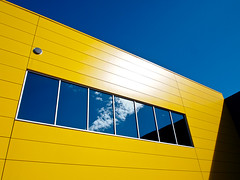 | 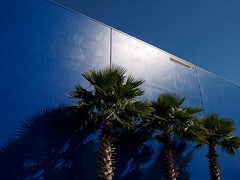 |
 |  |
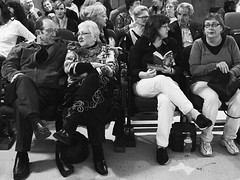 |  |
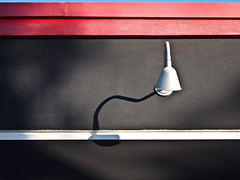 |  |
 |  |
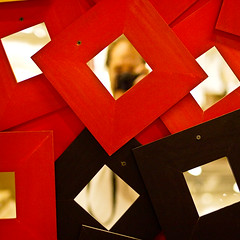 | 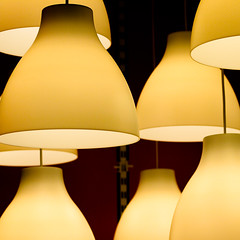 |
 | 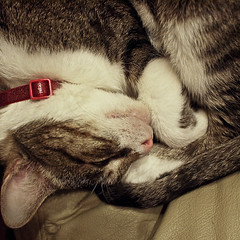 |
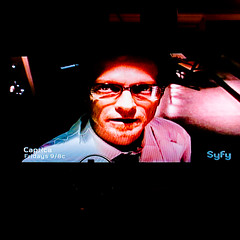 |  |
 | 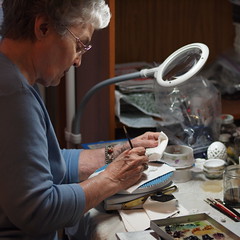 |
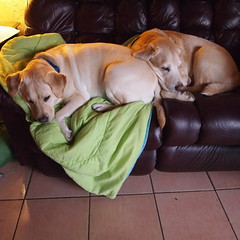 | 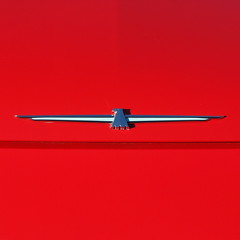 |

Wow. Excellent detailed review. I've been wanting to get my hands on one of these, since I always have my E-3 on me. Hopefully in the near future the price will go down a bit.
ReplyDeleteGreat review. Couldn't agree more on most of your points, especally the fact that cameras like people have personalities and you have to match them well. I usually use big Nikons, but found the E-P2 a marvel for street photography. I did however go with the Panasonic Lumix 14-45mm. It is a better quality build, and a sharper lens. This is the camera I will take on my travels.
ReplyDeleteHey, that's a great review! As an owner of the E-P2, I was thinking of getting the 12-60mm lens for use on this camera. From your experience, is the AF with the 12-60mm lens noticeably slower than with the 14-45mm kit lens of the E-P2?
ReplyDeleteEinZen said...
ReplyDeleteI was thinking of getting the 12-60mm lens for use on this camera. From your experience, is the AF with the 12-60mm lens noticeably slower than with the 14-45mm kit lens of the E-P2?
Yes, the 12-60mm is noticably slower than the kit lens. If you want to use a faster 4/3rds regular lens then I strongly recommend the 14-54mm MkII. The MkII was reworked from the MkI and introduced along with the E-30 to take advantage of the E-30's CDAF capability. I also recommend the MkII because it is an f/2.8 to f/3.5 speed lens that works as well wide open as stopped down. And the 14-54mm MkII is less than half the cost of the 12-60mm. I would only purchase the 12-60mm if you use or intend to purchase the E-30, E-3, or the E-5. Mounted on either of those three camera bodies, the 12-60mm is super-fast and accurate.
Thanks for your advice!
ReplyDeleteI thought the 12-60mm being the newer lens, would perform faster than the 14-54mm MKII...however, I've been thinking of getting the E-5, but the MKII lens is an interesting alternative for my budget. Thanks, I have more to think about now ;)
love your comments on the E-P2. im in love with this camera also.
ReplyDeletewould love to know what you think of the panny 20mm f1.7 M43 lens and how it measures up to the 50mm 43 lens you discussed in your review.
hope your still loving this camera
Thank you. It would be a little hard to compare the Panasonic 20mm µ4/3rds with the Zuiko Digital 50mm regular 4/3rds lens. A better comparison would be between the M.Zuiko 17mm 1:2.8 and the Panasonic 20mm 1:1.7.
ReplyDeleteI did review the 17mm on another site: http://www.thewsreviews.com/2010/07/olympus-mzuiko-digital-17mm-f28.html